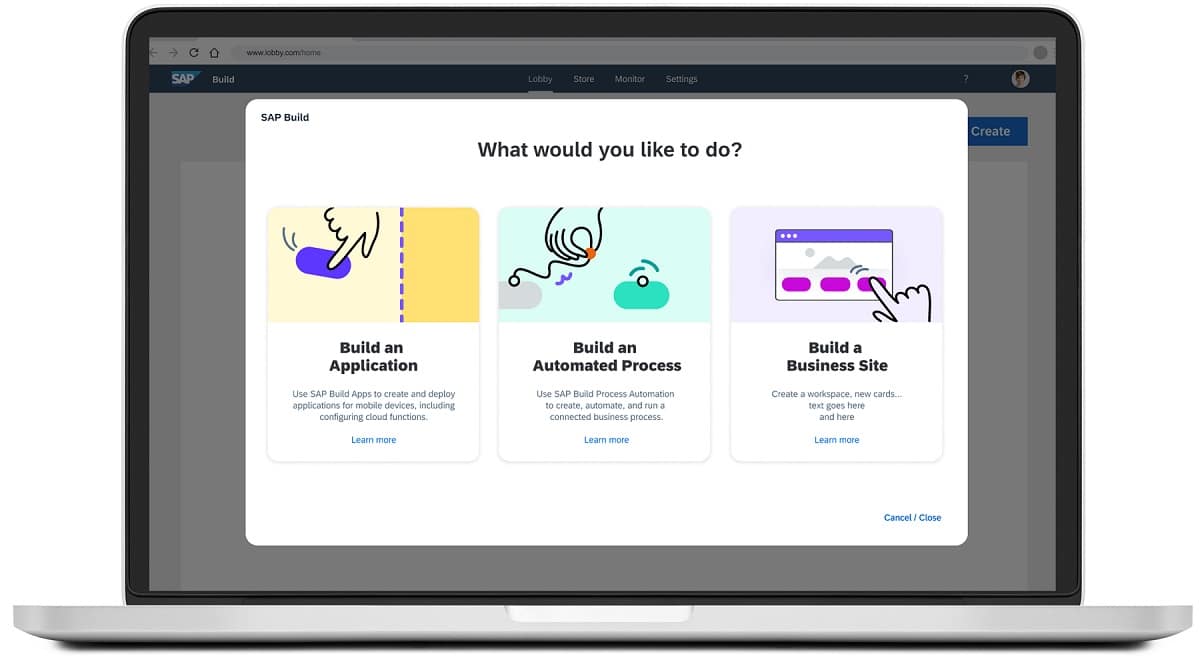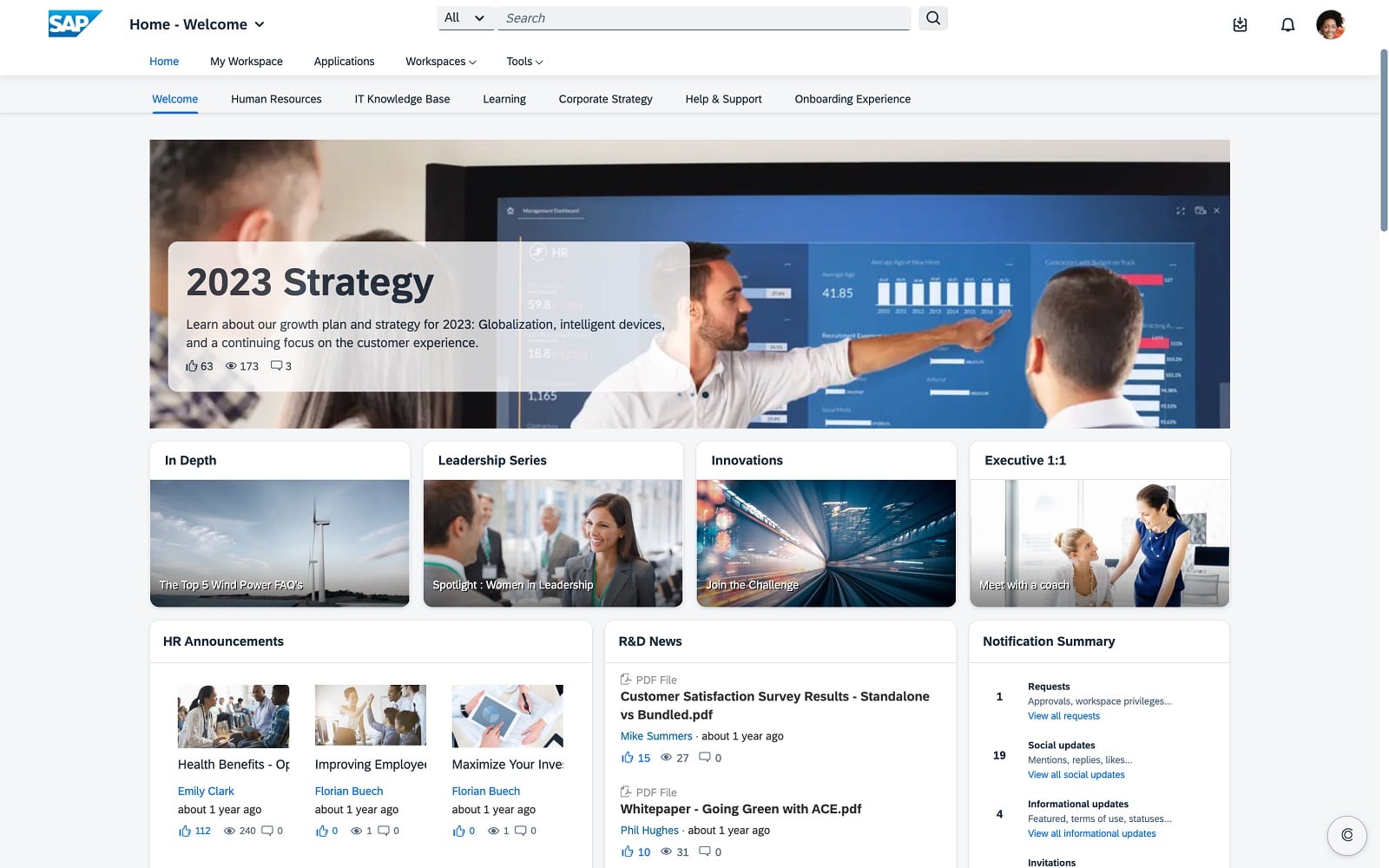Today we proudly announced the evolution of our low-code portfolio: SAP Build. As a key component of SAP Business Technology Platform (SAP BTP), SAP Build enables business users to easily create and augment enterprise applications, automate tedious processes, and design engaging business sites.
For more details on the SAP Build announcement, read Unleashing Business Expertise with SAP Build, from JG Chirapurath, chief marketing and solutions officer for SAP BTP.
With this new low-code offering, we are evolving our strategy from visual prototyping — known to many customers as Build.me — to designing, deploying, and running enterprise-grade applications fully visually. Learnings from Build.me around project ideation and discovery are being leveraged for the new SAP Build offering.

The worldwide market for low-code tools ballooned almost 23% in the last year and these days, 41% of non-IT employees are building or customizing applications, according to Gartner. So, if it is widely accepted in the industry that low-code platforms will help accelerate business transformations, it is unclear to many what can be achieved with visual development.
Let’s take a deeper look at SAP Build capabilities and how they help SAP customers deliver new, innovative solutions quickly.
Unified Developer Experience
SAP Build provides a unified experience for users of all skills levels. They can collaborate on creating applications, automating processes, and deploying business sites by using visual tools and a rich set of services and pre-built content.
 SAP Build users can share reusable artifacts such as user experience (UX) components, workflows, automations, data models, and business logic among team members and across projects. When it comes to accessing business data from other systems, developers can encapsulate APIs as simplified service interfaces, so called “action projects,” and make them available in the SAP Build library.
SAP Build users can share reusable artifacts such as user experience (UX) components, workflows, automations, data models, and business logic among team members and across projects. When it comes to accessing business data from other systems, developers can encapsulate APIs as simplified service interfaces, so called “action projects,” and make them available in the SAP Build library.
From there, non-technical users can use them without the need to handle the underlying complexity of APIs, while at the same time complying with IT security requirements. Similarly, citizen developers can use SAP Build solutions to access artifacts, such as data models, created in our professional integrated development environment (IDE) SAP Business Application Studio.
All this greatly facilitates the creation of composable and sophisticated applications leveraging the skills, expertise, and resources from fusion teams.
Let’s have a deeper look at what can be achieved in SAP Build.
SAP Build Apps
Today’s enterprise users are widely accustomed to modern, fast, and responsive user interfaces. With SAP Build Apps, the evolution of SAP AppGyver, we can deliver both mobile and web applications with pixel-perfect design using the drag-and drop functionality and a rich component library. Business users create business logic visually and build beautiful user interfaces without coding.
But there is more: With SAP Build Apps “cloud functions,” we introduce a way to visually create a cloud-deployed back end for your application. These new cloud functions provide a way to define and run custom business logic and manage persistency and integrations in the cloud, without the need to provision or manage underlying computations. With SAP Build Apps and the cloud functions capability, now everyone can become a full-stack cloud developer.
The cloud functions capability has two components: business logic and a data persistence layer.
Business services are built from individual logic nodes with inputs and outputs. An individual node can perform an action, such as updating a data entity or receiving data via the node’s input parameters. These nodes can then be connected to perform a series of activities, enabling visual building of business logic in the cloud.
A data entity defines the field structure and data types of the data being managed by the application. The native data entities are building blocks of the visual cloud functions project. Extended data entity expands the native entity by allowing users to modify data taken from the native entities using formula expressions. Furthermore, with extended entities, data transformations can be performed on the cloud side.

SAP Build Process Automation
Often, applications are just the start of extensive enterprise processes, including approval steps and additional data collection. SAP Build Process Automation offers task and process automation leveraging robotic process automation (RPA) bots, workflows, forms, embedded artificial intelligence (AI), business rules, and decisions.
In order to accelerate a business transformation from process insights to process automation, 135 tailored process improvement recommendations from SAP Signavio Process Intelligence can directly be leveraged in SAP Build Process Automation. Also, SAP Signavio Process Intelligence can trigger automated actions through APIs to perform process automations with workflows and bots. In addition, SAP Build Process Automation complements SAP Signavio Process Governance, managing approvals of process model changes in SAP Signavio Process Manager.
With this integration, SAP has now the most comprehensive set of capabilities needed for business transformation and automation.
 Regarding openness with third-party tools, Google Workspace integration allows to automate around products such as Google Sheets, Google Calendar, and Google Drive. It improves document-based processes by leveraging Google Vision AI with OCR and Google Document AI, in addition to Document Information Extraction from SAP AI Business Services.
Regarding openness with third-party tools, Google Workspace integration allows to automate around products such as Google Sheets, Google Calendar, and Google Drive. It improves document-based processes by leveraging Google Vision AI with OCR and Google Document AI, in addition to Document Information Extraction from SAP AI Business Services.
SAP Build Work Zone
Finally, with SAP Build Work Zone, users can create beautiful, custom business sites using new capabilities such as a flexible page builder and context-aware integrated UI cards. They can easily deploy the new applications and processes created in SAP Build Apps and SAP Build Processes Automation to an SAP Build Work Zone business site.
With SAP Build Work Zone, we bring together SAP Launchpad service and SAP Work Zone into a unified solution with two editions:
- SAP Build Work Zone, standard edition, is an evolution of SAP Launchpad service. It features an enhanced workspace navigation experience, UI integration cards that support SAP Fiori design system, low-code page building capabilities, and pre-packaged business content. SAP Build Work Zone standard is planned for general availability in early 2023 with the new enhanced experience. (Interested customers can register for the beta program here.)
- SAP Build Work Zone, advanced edition, formerly SAP Work Zone, provides additional advanced features for content management, web content, interactive and engaging work spaces, enhanced menu builder, and integration with third-party solutions.

SAP Build Work Zone allows end users to access all relevant applications from a single place. Users can easily build simple-to-consume and engaging digital workplace experiences that drive productivity and business agility for themselves, colleagues, suppliers, customers, partners, etc. — without writing any code.
In addition, we are announcing the beta of SAP Start, an out-of-the-box central access point for SAP public cloud solutions. It includes pre-configured business content from SAP applications to simplify access to SAP apps, processes, and tasks. Customers will be able to use SAP Build Work Zone to extend SAP Start to their needs.
Security and Compliance
SAP Build relies on existing SAP BTP services for security and compliance. For secure user management, this includes the identity authentication, user authorization, and provisioning services. The SAP Audit Log service is leveraged to keep records of all activity in the tools, helping ensure full transparency and compliance.
SAP Build safeguards operations with built-in centralized lifecycle management, monitoring, and governance. It provides robust DevOps framework with continuous integration/continuous delivery (CI/CD), automated testing, security, and performance checks to ship production-ready software confidently. IT admins can rely on the known platform capabilities, while at the same time empowering their business users with the agility of SAP Build.
Glimpse of the Future: What Are the Key Priorities in Our Road Map?
With the announcement of SAP Build today, we’re just at the beginning of a new journey. We have defined an ambitious road map. Our key priorities for the next quarters are to integrate SAP Build deeper with the portfolio of advanced cloud technologies available on SAP Business Technology Platform. Our endeavors in that direction include:
- SAP Graph will provide SAP Build users with straightforward access to semantically connected data entities across all SAP applications.
- SAP Build Process Automation will integrate more and more SAP AI Business Services to allow the extensive use of AI in both design time and run time. This includes auto-identification of application changes to suggest corrections in design time. For run time, it contains root-cause analysis of failures, self-healing corrections to automations based on best-recommended action, and soliciting human-in-loop or auto-adjusting job distribution.
- SAP Cloud Application Programming Model will be leveraged as a service. It will enable IT experts in fusion teams to build comprehensive data logic and leverage this in SAP Build Process Automation.
Become an SAP Builder
Ready to become an SAP Builder and build your next great idea without writing code? I have two recommendations for you on how to get started:
- Check out our new SAP Builders program, which helps customers ramp up quickly on SAP Build and connect with their peers. The program offers learning with interactive hands-on sessions and hackathons and gives SAP and community experts a forum to share best practices.
- Get started with SAP Build right away, as it is available on the free tier platform for SAP BTP, which enables you to start for free and without time limits. You can test your scenarios up to a specified capacity limit. When you’re ready to go, you can easily switch to the paid service plan, without losing your work. Check out our SAP BTP free tier page and get started right away.
Juergen Mueller is CTO and member of the Executive Board of SAP SE.



